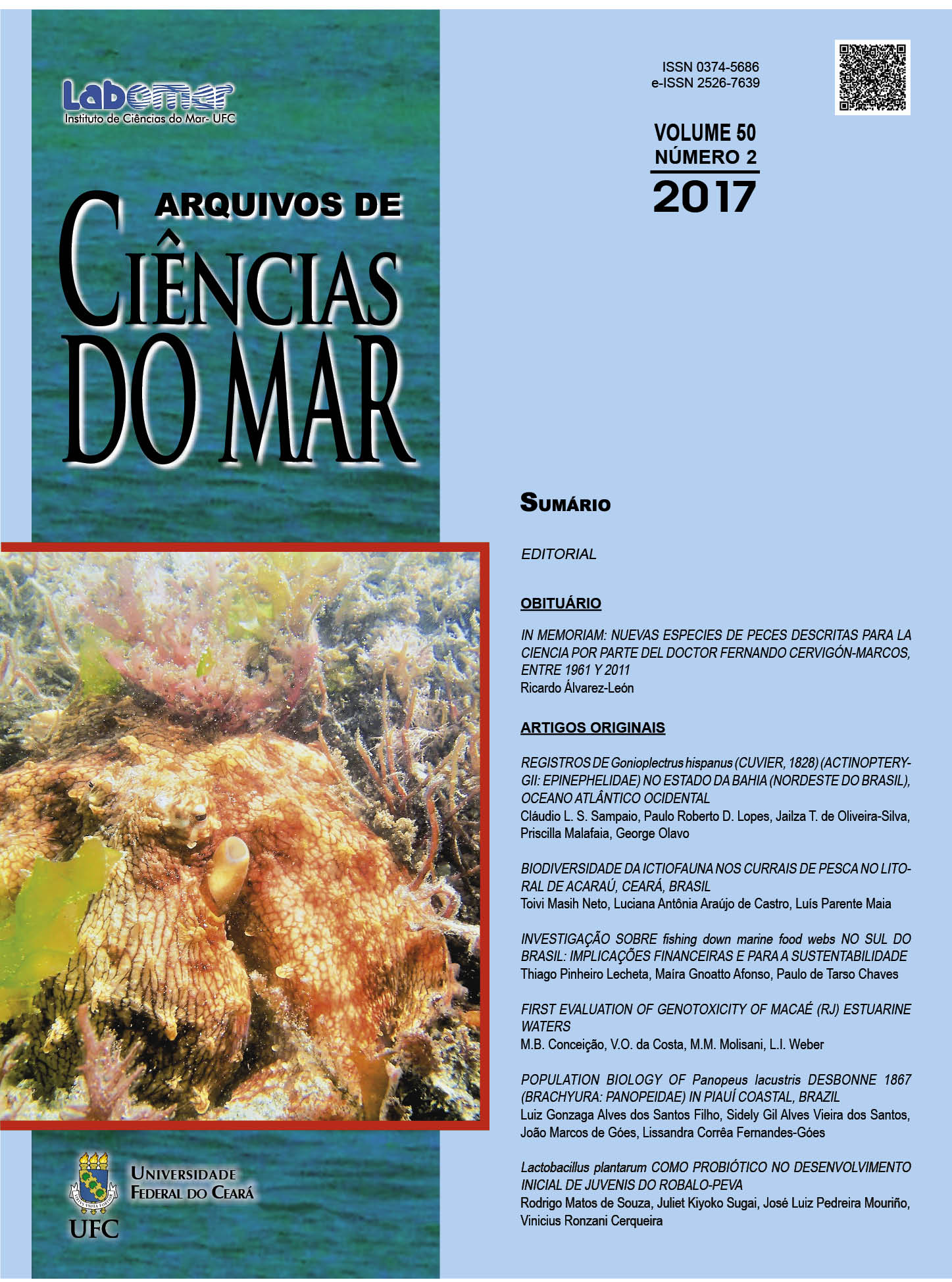On the fishing down marine food webs in Southern Brazil: implication for trade and conservation
DOI:
https://doi.org/10.32360/acmar.v50i2.31144Keywords:
fisheries management, commercial fishing, fishery resource, trophic habits, Sardinella brasiliensis, live-bait.Abstract
Increasing catches of low trophic level, non-piscivorous fish throughout the world indicates an effect fishing down food webs. We investigate the occurrence of fishing down in Southern Coast of Brazil along the 1990’ and 2000’ and implications for fisheries yield and sustainability. It was assumed as belonging to a ‘high’ trophic level piscivorous species (P), and as to a ‘low’ trophic level those non-piscivorous (NP). Data from fish landings and first commerce price were obtained. Results have shown that, opposing to fishing down, the P landings have proportionally increased. In the 1990’ landings of P were larger than NP in Rio Grande do Sul state only. Otherwise, in the 2000’ the larger landings of P were extended to São Paulo and Santa Catarina states. Despite the higher commercial price of P, the commercial value of landings (VDF) fell more than 50%,because of reduction in NP landings in São Paulo, and in P landings in Rio Grande do Sul. In Santa Catarina VFD has increased due to P resources, as skipjack. However, this fisheries lead to an indirect fishing down, because of an impressive contingent of juveniles of Brazilian sardine is used as live-bait.
Downloads
Published
Issue
Section
License
1. Proposta de Política para Periódicos de Acesso Livre
Autores que publicam nesta revista concordam com os seguintes termos:
- Autores mantém os direitos autorais e concedem à revista o direito de primeira publicação, com o trabalho simultaneamente licenciado sob a Licença Creative Commons Attribution que permite o compartilhamento do trabalho com reconhecimento da autoria e publicação inicial nesta revista.
- Autores têm autorização para assumir contratos adicionais separadamente, para distribuição não-exclusiva da versão do trabalho publicada nesta revista (ex.: publicar em repositório institucional ou como capítulo de livro), com reconhecimento de autoria e publicação inicial nesta revista.
- Autores têm permissão e são estimulados a publicar e distribuir seu trabalho online (ex.: em repositórios institucionais ou na sua página pessoal) a qualquer ponto antes ou durante o processo editorial, já que isso pode gerar alterações produtivas, bem como aumentar o impacto e a citação do trabalho publicado (Veja O Efeito do Acesso Livre).

